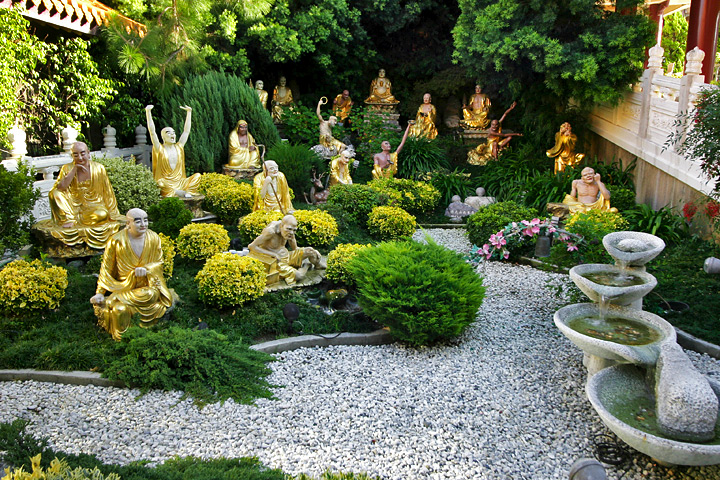|
Arahants
In Buddhism, an ''Arhat'' () or ''Arahant'' (, š šš³š¦šš¢š) is one who has gained insight into the true nature of existence and has achieved ''Nirvana'' and has been liberated from the endless cycle of rebirth. The understanding of the concept has changed over the centuries, and varies between different schools of Buddhism and different regions. A range of views on the attainment of arhats existed in the early Buddhist schools. The SarvÄstivÄda, KÄÅyapÄ«ya, MahÄsÄį¹ghika, EkavyÄvahÄrika, LokottaravÄda, BahuÅrutÄ«ya, PrajƱaptivÄda, and Caitika schools all regarded arhats as imperfect in their attainments compared to buddhas.Sree Padma. Barber, Anthony W. ''Buddhism in the Krishna River Valley of Andhra''. 2008. p. 44Warder, A.K. ''Indian Buddhism''. 2000. p. 277 Mahayana Buddhist teachings urge followers to take up the path of a bodhisattva, and to not fall back to the level of arhats and ÅrÄvakas. The arhats, or at least the senior ar ... [...More Info...] [...Related Items...] OR: [Wikipedia] [Google] [Baidu] |
Nirvana (Buddhism)
Nirvana or nibbana (Sanskrit: ą¤Øą¤æą¤°ą„ą¤µą¤¾ą¤£; International Alphabet of Sanskrit Transliteration, IAST: '; Pali: ') is the extinguishing of the passions, the "blowing out" or "quenching" of the activity of the grasping mind and its related unease. Nirvana is the goal of many Buddhism, Buddhist paths, and leads to the soteriological release from dukkha ('suffering') and rebirths in ''Saį¹sÄra (Buddhism), saį¹sÄra''. Nirvana is part of the Third Truth on "cessation of ''dukkha''" in the Four Noble Truths, and the "''summum bonum'' of Buddhism and goal of the Noble Eightfold Path, Eightfold Path." In all forms of Buddhism, Nirvana is regarded as the highest or supreme religious goal. It is often described as the unconditioned or uncompounded (Skt.: asaį¹skį¹ta, Pali: asankhata), meaning it is beyond all forms of conditionality ā not subject to change, decay, or the limitations of time and space. Nirvana is typically seen as being outside the realm of dependent ari ... [...More Info...] [...Related Items...] OR: [Wikipedia] [Google] [Baidu] |
ÅrÄvaka
ÅrÄvaka (Sanskrit) or SÄvaka (Pali) means "hearer" or, more generally, "disciple". This term is used in Buddhism and Jainism. In Jainism, a ÅrÄvaka is any lay Jain so the term ÅrÄvaka has been used for the Jain community itself (for example see Sarak and Sarawagi). ÅrÄvakÄcÄras are the lay conduct outlined within the treaties by ÅvetÄmbara or Digambara mendicants. "In parallel to the prescriptive texts, Jain religious teachers have written a number of stories to illustrate vows in practice and produced a rich rĆ©pertoire of characters.". In Buddhism, the term is sometimes reserved for distinguished disciples of the Buddha. Buddhism Early Buddhism In early Buddhism, a ÅrÄvaka or ÅrÄvikÄ is a disciple who accepts: * the Buddha as their teacher * the Buddha's teaching (the Dharma), including understanding the Four Noble Truths, ridding oneself of the unreality of the phenomenal, and pursuing nirvana. See, for instance, the '' Anguttara Nikaya''s second ''M ... [...More Info...] [...Related Items...] OR: [Wikipedia] [Google] [Baidu] |
Bhikkhunī
A bhikkhunÄ« (, ) is a fully ordained Buddhist nun. BhikkhunÄ«s live by the Vinaya, a set of either 311 Theravada, 348 Dharmaguptaka, or 364 Mulasarvastivada school rules. Until recently, the lineages of female monastics only remained in Mahayana Buddhism and thus were prevalent in countries such as Buddhism in China, China, Korean Buddhism, Korea, Buddhism in Taiwan, Taiwan, Buddhism in Japan, Japan, and Buddhism in Vietnam, Vietnam, while a few women have taken the full monastic vows in the Theravada and Vajrayana schools. The official lineage of Tibetan Buddhism, Tibetan Buddhist bhikkhunÄ«s recommenced on 23 June 2022 in Bhutan when 144 nuns, most of them Bhutanese, were fully ordained.DAMCHĆ DIANA FINNEGAN and CAROLA ROLOFF (BHIKį¹¢Uį¹ÄŖ JAMPA TSEDROEN). "Women Receive Full Ordination in Bhutan For First Time in Modern History", ''Lion's Roar'', JUNE 27, 2022. According to the Buddhist Canon, women are as capable of reaching Enlightenment in Buddhism, enlightenment as me ... [...More Info...] [...Related Items...] OR: [Wikipedia] [Google] [Baidu] |
Early Buddhist Schools
The early Buddhist schools refers to the History of Buddhism in India, Indian Buddhist "doctrinal schools" or "schools of thought" (Sanskrit: ''vÄda'') which arose out of the early unified Buddhist monasticism, Buddhist monastic community (Sangha (Buddhism), saį¹ gha) due to various schisms in the history of Buddhism, history of Indian Buddhism. The various splits and divisions were caused by differences in interpretations of the Monasticism, monastic rule (Vinaya), doctrinal differences and also due to simple geographical separation as Buddhism spread throughout the Indian subcontinent. The early Buddhist community initially split into two main NikÄyas (monastic groups, divisions), the Sthavira nikÄya, Sthavira ("Elders"), and the MahÄsÄį¹ghika ("Great Community"). This initial split occurred either during the reign of Ashoka, AÅoka (c. 268-232 BCE) or shortly after (historians disagree on the matter). Later, these groups became further divided on doctrinal grounds int ... [...More Info...] [...Related Items...] OR: [Wikipedia] [Google] [Baidu] |
Mara (demon)
Mara,, '; ; or ; ; also ćć¼ć©, ''MÄra'' or 天é, ''Tenma''; ; ; Tibetan Wylie: ''bdud''; ; ; ; in Buddhism, is a malignant celestial Asura king who tried to stop The Buddha, Prince Siddhartha from Awakening by trying to seduce him with his celestial Army and a vision of beautiful women who, in various legends, are often said to be Mara's daughters. In Buddhist cosmology, Mara is associated with death, rebirth and desire. Nyanaponika Thera has described Mara as "the personification of the forces antagonistic to enlightenment." He is Yama's fearsome persona and all beings associated with him, darkness and death, become forces of Mara. These forces consist of Asuras, Rakshasa, Pishacha, Pisacas, Aratis and animals. Origin His name is first mentioned in the ''Atharvaveda, Atharva Veda'' (1200 BCEā1000 BCE) as Mrtyu and Agha Mara, the evil slayer. He is called the "evil one who kills" and "Papiyan", denoting a being which is not only morally bad but intertwined wit ... [...More Info...] [...Related Items...] OR: [Wikipedia] [Google] [Baidu] |
ÅrÄvakayÄna
''ÅrÄvakayÄna'' (; ; ) is one of the three '' yÄnas'' known to Indian Buddhism. It translates literally as the "vehicle of listeners .e. disciples. Historically it was the most common term used by MahÄyÄna Buddhist texts to describe one hypothetical path to enlightenment. ÅrÄvakayÄna is the path that meets the goals of an Arhatāan individual who achieves liberation as a result of listening to the teachings (or following a lineage) of a Samyaksaį¹buddha. A Buddha who achieved enlightenment through ''ÅrÄvakayÄna'' is called a ''ÅrÄvakabuddha'', as distinguished from a Samyaksaį¹buddha or pratyekabuddha. Use of the term Isabelle Onians asserts that although "the MahÄyÄna ... very occasionally referred contemptuously to earlier Buddhism as the HinayÄna, the Inferior Way," "the preponderance of this name in the secondary literature is far out of proportion to occurrences in the Indian texts." She notes that the term ÅrÄvakayÄna was "the more politica ... [...More Info...] [...Related Items...] OR: [Wikipedia] [Google] [Baidu] |
Buddhahood
In Buddhism, Buddha (, which in classic Indo-Aryan languages, Indic languages means "awakened one") is a title for those who are Enlightenment in Buddhism, spiritually awake or enlightened, and have thus attained the Buddhist paths to liberation, supreme goal of Buddhism, variously described as Enlightenment in Buddhism, awakening or enlightenment (''bodhi''), ''Nirvana (Buddhism), NirvÄį¹a'' ("blowing out"), and Moksha, liberation (''vimokį¹£a''). A Buddha is also someone who fully understands the ''Dharma, DhÄrma'', the true nature of all things or Phenomenon, phenomena (''Abhidharma, dhÄrmata''), the Two truths doctrine, ultimate truth. Buddhahood (Sanskrit: ''buddhatva''; or ; zh, c=ęä½) is the condition and state of being a Buddha. This highest spiritual state of being is also termed ''sammÄ-sambodhi'' (Sanskrit: ''samyaksaį¹bodhi''; "full, complete awakening") and is interpreted in many different ways across schools of Buddhism. The title of "Buddha" is most c ... [...More Info...] [...Related Items...] OR: [Wikipedia] [Google] [Baidu] |
500 Rakan Statues, View From Above, Daisho-in, Miyajima, Hatsukaichi, 2016
5 (five) is a number, numeral and digit. It is the natural number, and cardinal number, following 4 and preceding 6, and is a prime number. Humans, and many other animals, have 5 digits on their limbs. Mathematics 5 is a Fermat prime, a Mersenne prime exponent, as well as a Fibonacci number. 5 is the first congruent number, as well as the length of the hypotenuse of the smallest integer-sided right triangle, making part of the smallest Pythagorean triple ( 3, 4, 5). 5 is the first safe prime and the first good prime. 11 forms the first pair of sexy primes with 5. 5 is the second Fermat prime, of a total of five known Fermat primes. 5 is also the first of three known Wilson primes (5, 13, 563). Geometry A shape with five sides is called a pentagon. The pentagon is the first regular polygon that does not tile the plane with copies of itself. It is the largest face any of the five regular three-dimensional regular Platonic solid can have. A conic i ... [...More Info...] [...Related Items...] OR: [Wikipedia] [Google] [Baidu] |
Leader
Leadership, is defined as the ability of an individual, group, or organization to "", influence, or guide other individuals, teams, or organizations. "Leadership" is a contested term. Specialist literature debates various viewpoints on the concept, sometimes contrasting Eastern and Western approaches to leadership, and also (within the West) North American versus European approaches. Some U.S. academic environments define leadership as "a process of social influence in which a person can enlist the aid and support of others in the accomplishment of a common and ethical task". In other words, leadership is an influential power-relationship in which the power of one party (the "leader") promotes movement/change in others (the "followers"). Some have challenged the more traditional managerial views of leadership (which portray leadership as something possessed or owned by one individual due to their role or authority), and instead advocate the complex nature of leadership w ... [...More Info...] [...Related Items...] OR: [Wikipedia] [Google] [Baidu] |
Apostles In The New Testament
In Christian theology and ecclesiology, the apostles, particularly the Twelve Apostles (also known as the Twelve Disciples or simply the Twelve), were the primary Disciple (Christianity), disciples of Jesus according to the New Testament. During the Life of Jesus in the New Testament, life and ministry of Jesus in the Christianity in the 1st century, 1st century AD, the apostles were his closest followers and became the primary teachers of the gospel message of Jesus. There is also an Eastern Christianity, Eastern Christian tradition derived from the Gospel of Luke that there were Seventy disciples, seventy apostles during the time of Jesus' ministry. The commissioning of the Twelve Apostles during the ministry of Jesus is described in the Synoptic Gospels. After his Resurrection of Jesus, resurrection, Jesus sent eleven of them (as Judas Iscariot by then had Judas Iscariot#Death, died) by the Great Commission to spread his teachings to all nations. In the Pauline epistles, ... [...More Info...] [...Related Items...] OR: [Wikipedia] [Google] [Baidu] |
East Asia
East Asia is a geocultural region of Asia. It includes China, Japan, Mongolia, North Korea, South Korea, and Taiwan, plus two special administrative regions of China, Hong Kong and Macau. The economies of Economy of China, China, Economy of Japan, Japan, Economy of South Korea, South Korea, and Economy of Taiwan, Taiwan are among the world's largest and most prosperous. East Asia borders North Asia to the north, Southeast Asia to the south, South Asia to the southwest, and Central Asia to the west. To its east is the Pacific Ocean. East Asia, especially History of China, Chinese civilization, is regarded as one of the earliest Cradle of civilization#China, cradles of civilization. Other ancient civilizations in East Asia that still exist as independent countries in the present day include the History of Japan, Japanese, History of Korea, Korean, and History of Mongolia, Mongolian civilizations. Various other civilizations existed as independent polities in East Asia in the past ... [...More Info...] [...Related Items...] OR: [Wikipedia] [Google] [Baidu] |










